
World’s first electronic controlled ECCR
For some weeks now I’ve been looking forward to writing this article. It is not a daily event that I rediscover a new rebreather with very particular properties. The rediscovery of this rebreather is however a very particular event! During the search for manufacturers of rebreathers I encountered a number of times a nearly untraceable name.
There is not much information about the Old Dominion Development Corporation, at least not as a company. That’s why I already gave up on them during my research of products of this firm.
Until by coincidence I found a patent with the names of Carl Herluf Holm and Elihu Root III. After a closer look these men turned out to be the delegates of The Old Dominion Research and Development Corporation. Of course my interest had been awoken by then and I read the patent attentively. During reading I realized that I came across something very special…
When I was trained to become a scuba diver and later on as I became interested in the history and developments of rebreathers, I have always thought that the “Electrolung rebreather” was the very first rebreather in which the partial oxygen pressure was regulated. The Electrolung does have the reputation to be the first unit in which the oxygen pressure was held constant by ongoing monitoring of the partial oxygen pressure. By the way, the measuring took place by a Polarographic oxygen cell.
Intermezzo:
Polarographic Oxygen Sensors
The polarographic oxygen sensor is often referred to as a Clark Cell [J. L. Clark (1822- 1898)]. In this type of sensor, both the anode (typically silver) and cathode (typically gold) are immersed in an aqueous electrolyte of potassium chloride. The electrodes are separated from the sample by a semi-permeable membrane that provides the mechanism to diffuse oxygen into the sensor. The silver anode is typically held at a potential of 0.8V (polarizing voltage) with respect to the gold cathode. Molecular oxygen is consumed electrochemically with an accompanying flow of electrical current directly proportional to the oxygen concentration based on Faraday’s law. The current output generated from the sensor is measured and amplified electronically to provide a percent oxygen measurement. One of the advantages of the polarographic oxygen sensor is that while inoperative, there is no consumption of the electrode (anode). Storage times are almost indefinite. Similar to the galvanic oxygen sensor, they are not position sensitive. Because of the unique design of the polarographic oxygen sensor, it is the sensor of choice for dissolved oxygen measurements in liquids. For gas phase oxygen measurements, the polarographic oxygen sensor is suitable for percent level oxygen measurements only. The relatively high sensor replacement frequency is another potential drawback, as is the issue of maintaining the sensor membrane and electrolyte.
Source: Alpha Omega Instrument Corporation
The cells in the Electrolung worked on this polaromagnetic principle, however the anode and the cathode had not been made of silver and gold but of silver and platinum. The permeable membrane had been made of Teflon.
Besides this palaromagnetic principle there are several other methods to monitor the oxygen pressure. Today, in general, we find in our Megalodons, Inspiration and Mk-series rebreathers, electrochemical oxygen sensors.
See sensors here:
The patent I read however, showed a rebreather which kept its pO2 constant by monitoring its oxygen pressure based on this paramagnetic principle!
I found a rebreather which in those times already performed oxygen pressure measuring and also regulated the pO2 by injecting oxygen!
The set had been built in a the same manner as the current electronically regulated rebreathers. A high pressure oxygen cylinder, diluent gas cylinder, a scrubber and closed breathing loop and full face mask!
The main difference between the Electrolung and the Marion Device however is the date of invention. The patent for the Electrolung was requested in 1970, under US patent 3727626 which was recognized in 1973.
This story is about a Marion Breathing Device which was developed in 1951!
The rebreather was developed and patented. In the patent the inventors correctly mentioned that the oxygen monitoring according to the paramagnetic principle was not invented by themselves, but by the Nobel Prize winner Linus Pauling.
The application of paramagnetic oxygen monitoring in a diving apparatus was by their knowledge (patent text) applied for the first time to offer mankind a constant oxygen pressure for breathing! The fact that this text in the patent has been mentioned is a basis for the assumption that we are dealing here with the first electronically regulated rebreather!
What is paramagnetic oxygen monitoring? This principle is invented by noble price winner Linus Pauling (1901-1994) US. Patent 2416344. Well, the principle relies on the property that oxygen is attracted by a strong magnetic field. This property is called paramagnetism. Between two magnets two glass balls filled with little nitrogen are placed on an axle. If oxygen is supplied this will be strongly attracted by the magnetic field and the glass balls with nitrogen will turn away from the concentrated field. As a result, the central axle together with the mounted little mirror will turn round. A light source focused on the mirror will now by the turning shine on a photodiode and deliver an electric voltage. With this voltage a switch can now be activated which regulates the oxygen injection. With much oxygen the oxygen injector will be closed, the light bundle will not shine on the diode. As soon as the oxygen pressure decreases the light bundle will slowly turn to the diode until the switch opens.
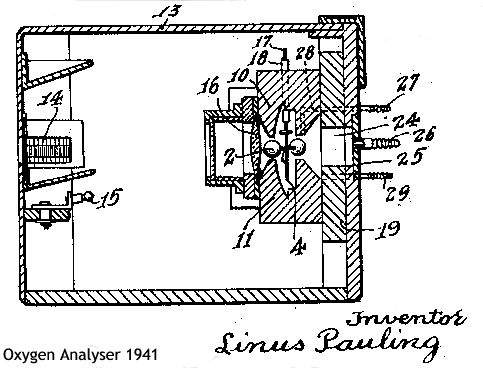
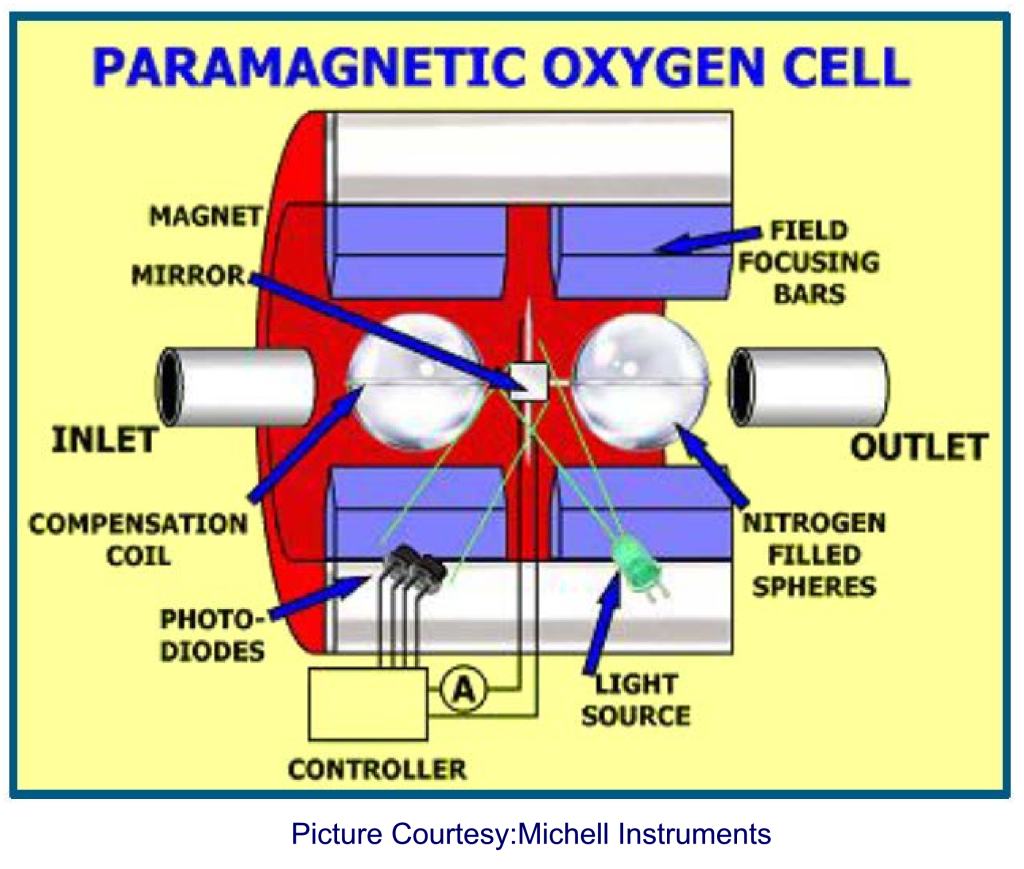
Mr Holm and Root III did this invention at the beginning of the 50’s, supposedly around 1951. On May 23, 1952 they have offered their invention to the American patent office. The invention has been examined during a lot of years and on august 29, 1961 has been eventually patented! By the way this happened 42 days before my birth date 😉 The American patent 2998009 describes the invention of the Marion Device in detail (see below). In the same patent a second invention, about how an oxygen doses is regulated on the basis of viscosity, has been set out. A large difference in viscocity between oxygen and nitrogen exists. In the patent you’ll find a sketch of such a construction in figure 12.
(the original patent can be found at the end of this article)
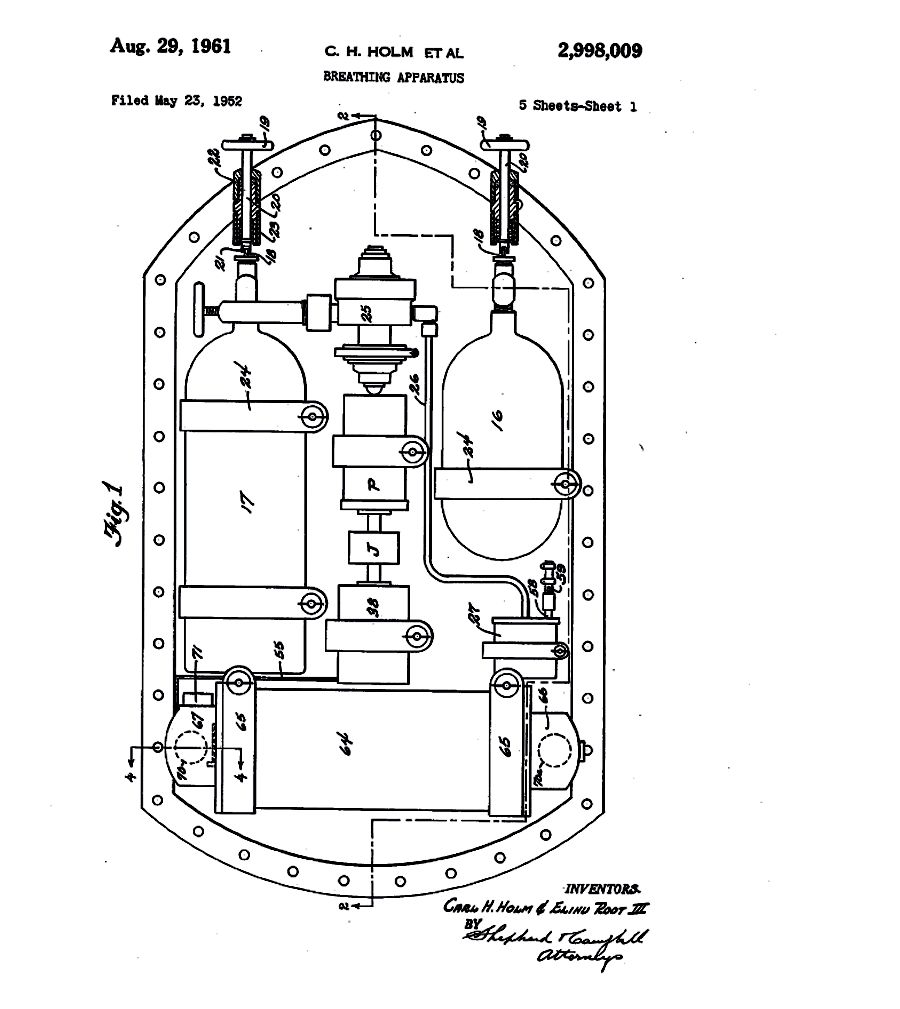
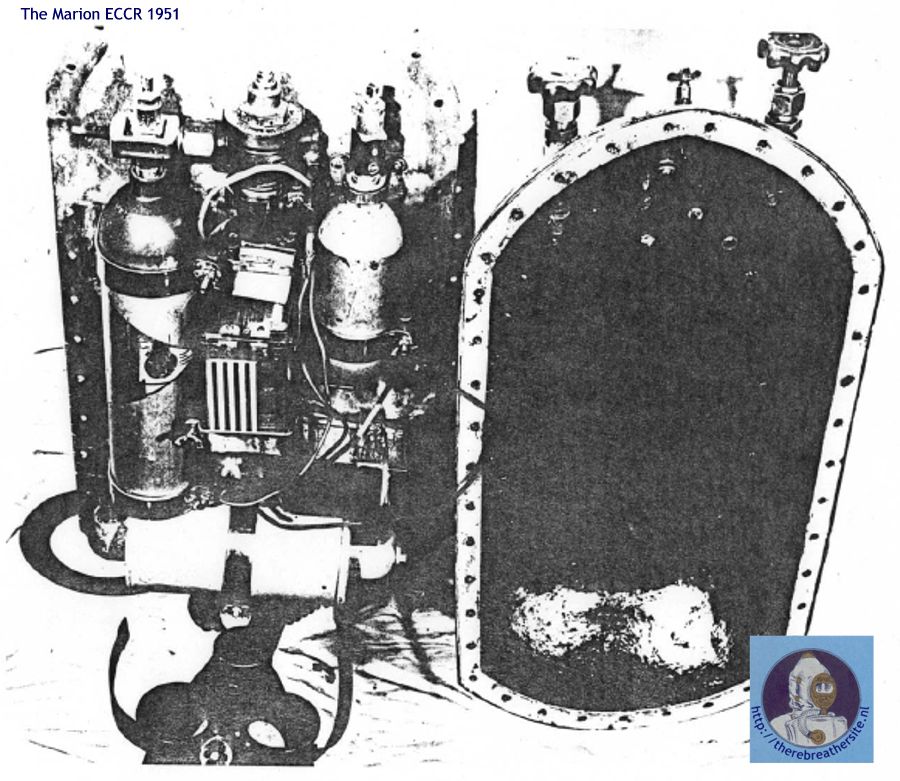
In the long search for further background information I found an exhaustive test report of the NEDU in which a long range of tests of this apparatus is described. It became clear that the Unit in 1952, was anything but foolproof and during several years a lot of modifications were carried out. The first scrubber applied came from a Lambertsen unit. The cylinders were standard medical cylinders. A standard two stage AIRCO machine was used in the feeding line to the electronically regulated valve. A very remarkable sentence in the Nedu report spoke of a test which simulated a workload. The test was about lifting a weight of 68.5 pond for 27.25 inch during 5 x per minute during a period of 10 minutes while breathing from the rebreather. The parameters do not seem randomly chosen 😉 (The diver therefore moves in 10 minutes 10 x 5 x 453,6x 68.5 ~ 1.5 metric ton!)
The Nedu report can be downloaded using the link below.

The Nedu report mentions a number of references to the photographs which have been incorporated in the same report. These photographs are the only thing I could lay my hands on. Together with the drawings from the patent we could form ourselves a nice picture of the unit. It would however be terrific if we could document these original units. For this reason I would like to end this article expressing the hope that in the near future I’ll be able to give you more information on this particular invention and development.
You could add your contribution providing me with the answers to the following questions in any possible way:
-Who has information about The Old Dominion Research and Development Corporation?
– Who has information about Carl Herluf Holm and Elihu Root III?
-Who can help me out with better photographs of these units?
-Who has more information about the development of these unit?
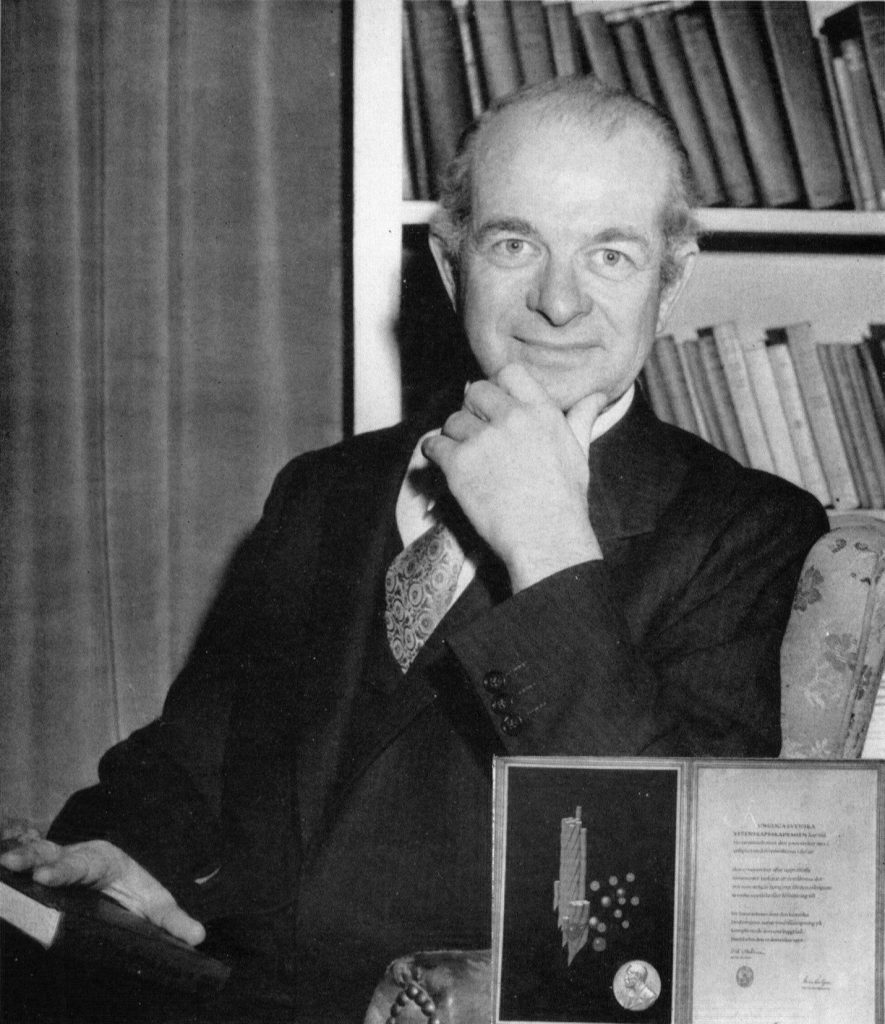
The patent of the Marion device can be found here: https://patentimages.storage.googleapis.com/f5/be/05/9eb6120d0389c3/US2998009.pdf
Thanks to Rita Oosterbaan for editing and translation!

Therebreathersite was founded by Jan Willem Bech in 1999. After a diving career of many years, he decided to start technical diving in 1999. He immediately noticed that at that time there was almost no website that contained the history of closed breathing systems. The start for the website led to a huge collection that offered about 1,300 pages of information until 2019. In 2019, a fresh start was made with the website now freely available online for everyone. Therebreathersite is a source of information for divers, researchers, technicians and students. I hope you enjoy browsing the content!
